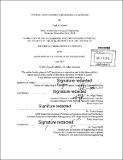| dc.contributor.advisor | Edgar Blanco and Tauhid Zaman. | en_US |
| dc.contributor.author | El Jebbari, Zyad | en_US |
| dc.contributor.other | Massachusetts Institute of Technology. Engineering Systems Division. | en_US |
| dc.coverage.spatial | f-mr--- | en_US |
| dc.date.accessioned | 2015-11-09T19:50:14Z | |
| dc.date.available | 2015-11-09T19:50:14Z | |
| dc.date.copyright | 2015 | en_US |
| dc.date.issued | 2015 | en_US |
| dc.identifier.uri | http://hdl.handle.net/1721.1/99809 | |
| dc.description | Thesis: M. Eng. in Logistics, Massachusetts Institute of Technology, Engineering Systems Division, 2015. | en_US |
| dc.description | Cataloged from PDF version of thesis. | en_US |
| dc.description | Includes bibliographical references (pages [72]-[74]). | en_US |
| dc.description.abstract | The handicraft sector in Morocco represents more than 9% of the nation's GDP and employs 2.3 million people. However, despite their talent and expertise, Morocco's artisans are struggling to reach markets other than local regional or national markets. The main distribution model used so far has been the classic retail distribution model, which does not add value to the artisans' work, with most downstream actors playing the role of the middlemen. Other Ecommerce models such as the marketplace model or the crowdfunding model did not solve all the issues faced by artisans and customers. This paper provides the framework for a new distribution channel for Moroccan artisans to improve the efficiency of the value chain linking them to the American consumer by eliminating all unnecessary steps, overhead, and overall inefficiencies of the current distribution models. We first identify the models that are currently used to bring the artisans' crafts to the end consumer in developed markets: the market place (used by the platform Etsy), the crowdfunding model and the classic retail distribution model involving middlemen. We assessed the benefits of all the models by developing a new framework allowing to score each one of them. We then switched our focus to a hybrid model: a crowdfunding platform where the company partners with the artisans to align the different stakeholders' interests. To the extent of our knowledge, this model has not been used yet. It was found that our methodology could help artisans access international markets more efficiently. We finished by determining the optimal strategy using social media to market this platform and engage more efficiently potential customers. Keywords: handicraft, supply chain, crowdfunding, retail, social network marketing. | en_US |
| dc.description.statementofresponsibility | by Zyad El Jebbari. | en_US |
| dc.format.extent | [74] unnumbered pages | en_US |
| dc.language.iso | eng | en_US |
| dc.publisher | Massachusetts Institute of Technology | en_US |
| dc.rights | M.I.T. theses are protected by copyright. They may be viewed from this source for any purpose, but reproduction or distribution in any format is prohibited without written permission. See provided URL for inquiries about permission. | en_US |
| dc.rights.uri | http://dspace.mit.edu/handle/1721.1/7582 | en_US |
| dc.subject | Engineering Systems Division. | en_US |
| dc.title | Distribution channel for Moroccan artisans | en_US |
| dc.type | Thesis | en_US |
| dc.description.degree | M. Eng. in Logistics | en_US |
| dc.contributor.department | Massachusetts Institute of Technology. Engineering Systems Division | |
| dc.identifier.oclc | 927170458 | en_US |
